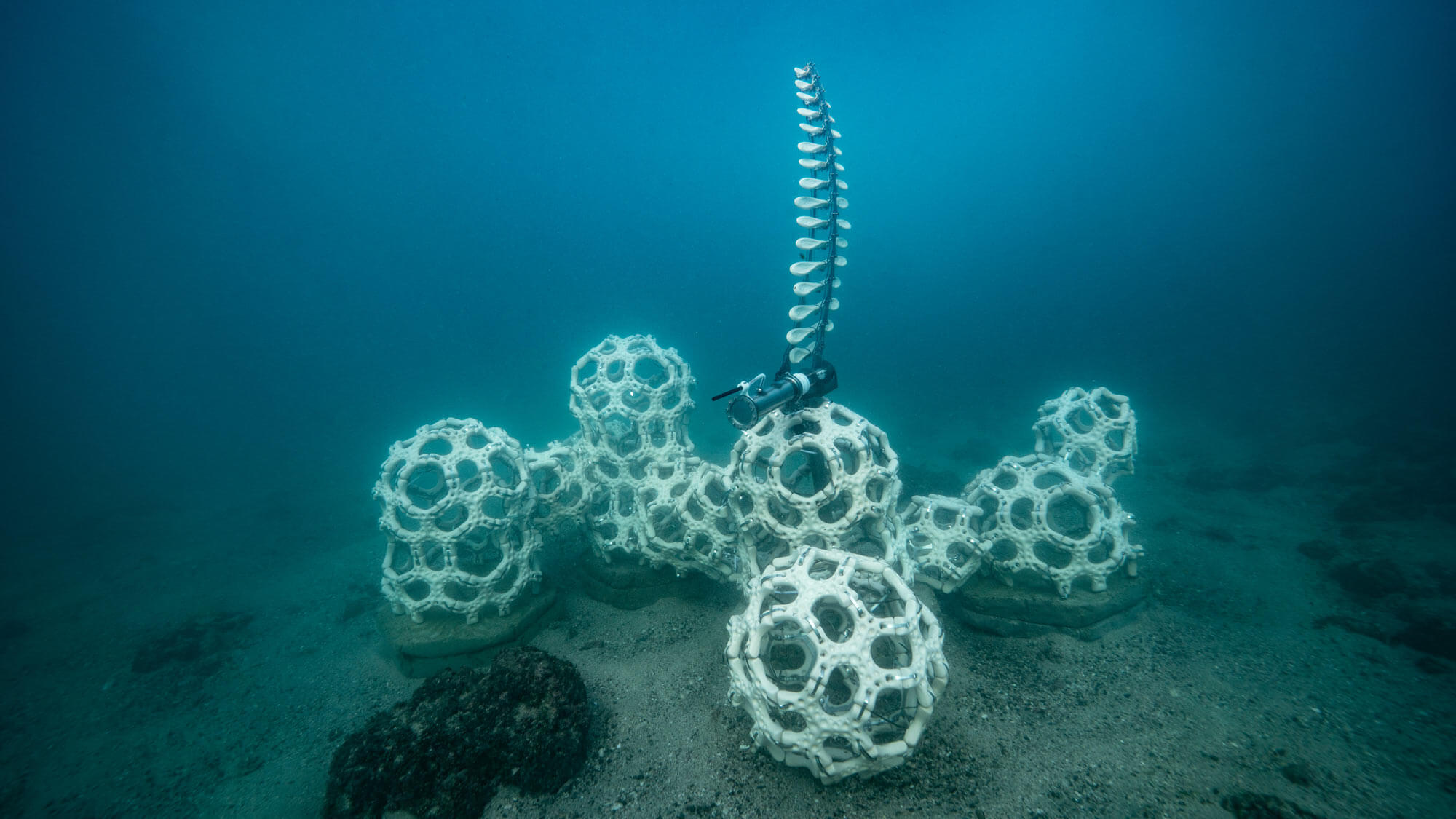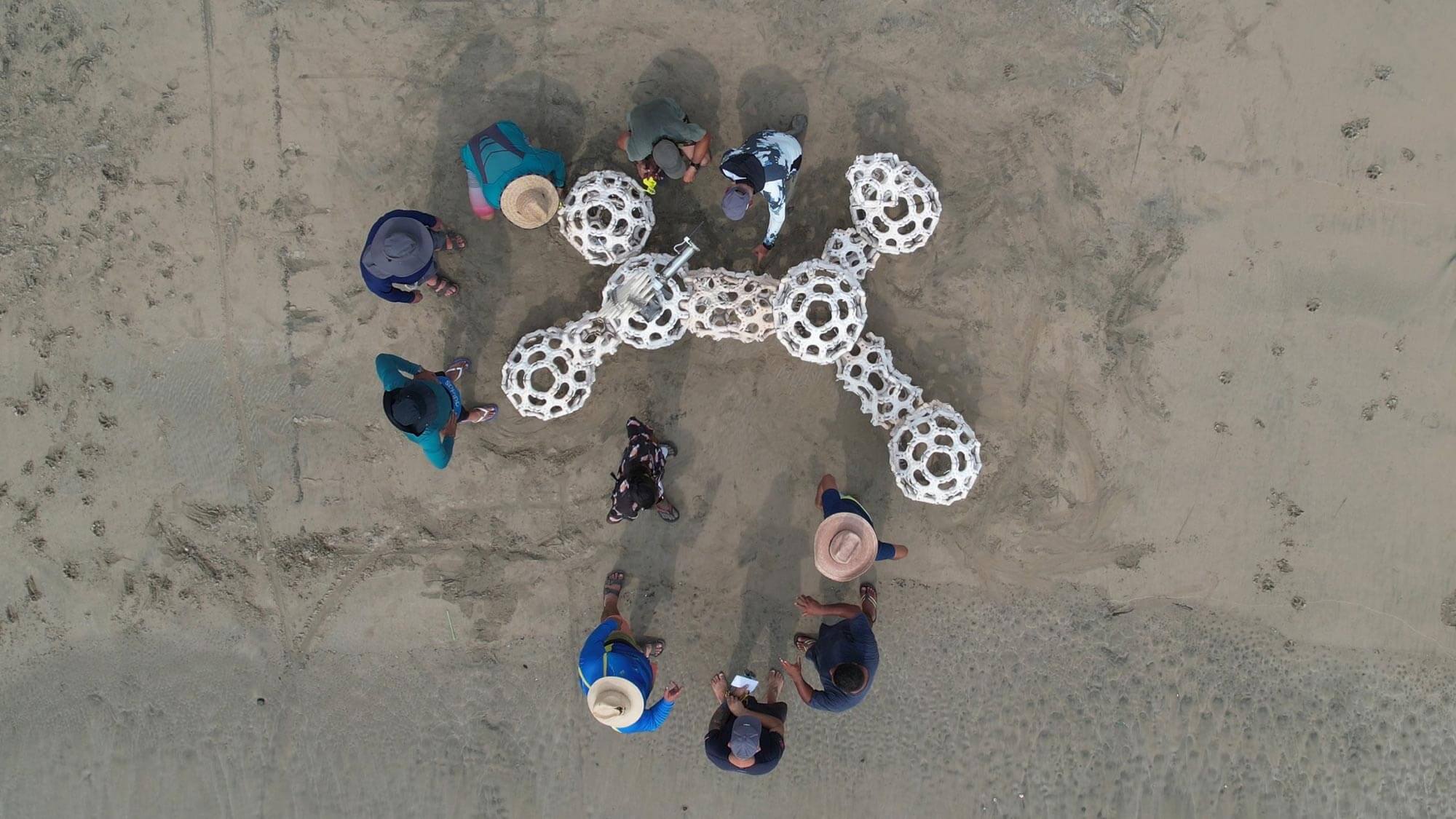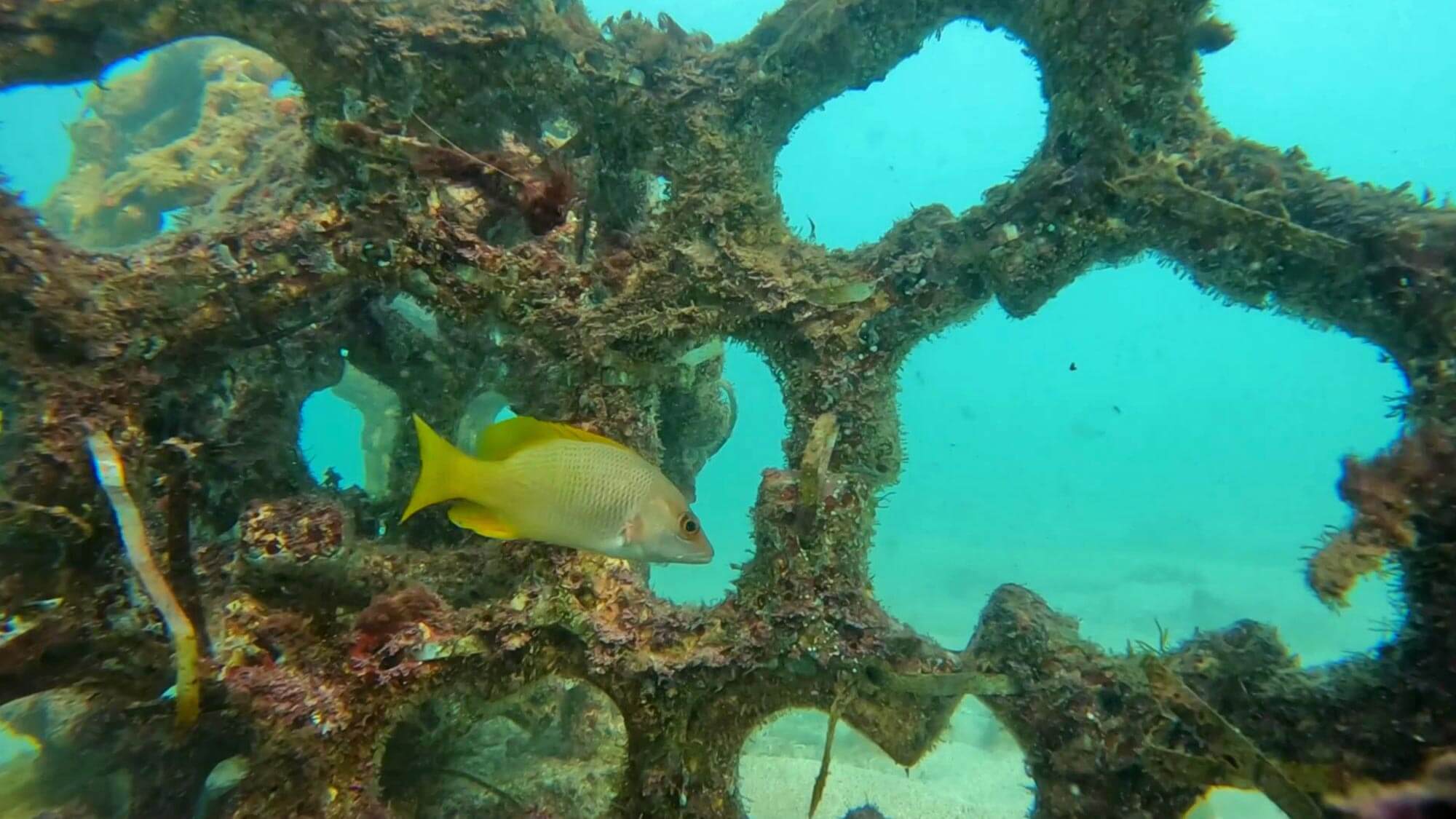Honorary Mention
Korallysis is a hybrid organism made up of technological devices and coral colonies that coexist in a mutualistic relationship. It is formed from ceramic segments, based on a geometry that allows it to adapt to the seabed. Its structure creates an ideal habitat for the development of coral communities, as a refuge for fish in their early stage and various species. It has different kinetic elements dedicated to generating electricity, from ocean currents and waves. This energy is used to generate electrolysis, which allows minerals present in seawater, such as calcium carbonate, to adhere to the ceramic structure to accelerate the growth of the corals that live there. Korallysis works as a research platform at the intersection of art and science, in which technologies are implemented that help the restoration of coral reefs.
Coral reefs are complex ecosystems that help capture carbon dioxide (CO2) from the atmosphere by fixing it in their skeletons. Its existence is essential for the formation of food networks, hosting a rich marine diversity. They are one of the marine ecosystems most affected by phenomena such as urbanization, poor waste management, and climate change. In recent decades, they have suffered severe degradation, representing a risk for thousands of species that inhabit them.
We seek to raise awareness about the importance of protecting coral reefs by proposing new forms of relationship with nature based on collaboration, forming multidisciplinary work teams and seeking the participation of local communities to install these new organisms in coral reefs, such as a way to invite them to approach the problem.
Credits
Production: Taller30, https://taller30.net
Technical support: Ale Mendoza, Michel Abrão, Yorick Bekker, Andrea Rassel
Collaboration:
Regional Aquaculture and Fisheries Research Center-CRIAP Manzanillo of National Institute of fisheries and aquaculture – INAPESCA, Mexico
Ejidal Cooperative Society Tenacatita Mexico
Restore Coral AC / Oceanus AC
Special thanks to: Dawrin Pech Puch, Francisco Pedroza, Ramon Rodriguez, Oskar Vazquez, Remigio Gutierrez, Miguel Angel Garcia, Gabriela Nava, Rafael Chacón, Adrian Rodriguez, Ramon Rodriguez, Felza Ríos, Barbara Gastelum, Eric Fairfield, Adrian Arvizo, Angelica Riesgo, Cooperativa pesquera de la Manga, Daniel Kosonoy, Adria Calaresu, Diana Ruiz Pino, Miguel Rodríguez Sepúlveda, Francesca Fisher, Vladimir Espinoza, La Bahía Mariscos.
With support from: Goethe-Institut, Prince Claus Fund for Culture and Development; Sistema Nacional de Creadores de Arte Mexico; Estímulos Fiscales para las Artes EFIARTES
Biography
Gilberto Esparza (MX) (*1975) lives and works in San Miguel de Allende, Guanajuato. He investigates technology as a possibility to pose questions and solutions to the impacts of the human footprint on life on earth, rethinking the relationship of human societies with the natural environment. He works with biotechnology in collaboration with research centers and local communities. He received the Golden Nica for his project *Plantas Autofotosintéticas* in the Hybrid Art category, Prix Ars Electronica 2015, an Honorary Mention for *Nomadic Plants* in 2013, and a second Vida 13 award from Fundación Telefónica de España, among other awards.
Jury Statement
For millions of years coral reefs have adapted to and survived in their environments due to their autonomous systems, and they serve as important ecosystems for surrounding organisms. Humans, on the other hand, are known for putting these systems in danger. So what approach is needed for us to jump into the umwelt of coral reefs? Korallysis is a hybrid organism and technological device which, through electrolysis of the minerals in seawater, creates calcium carbonate that helps the growth of coral. This device is equipped with motion elements that generate electricity from the ocean’s currents and waves. Furthermore, Korallysis proposed an interdisciplinary space for oceanographers, biologists, material engineers, and biotechnologists, where they may create opportunities for local community-building and cultural events including artists, and citizen dialogues and engagement in the arts. This project itself serves as the infrastructure that encourages coexistence and mutually supportive relationships among coral reefs. Korallysis, as a hybrid organism, can be considered a new inhabitant of the coral umwelt that also invites humans to participate in their ecosystem.









